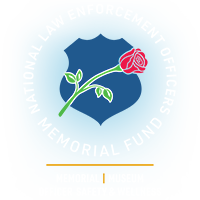Milestones in the History of the Profession
1600s
APRIL 1635
The City of Boston establishes a “night watch,” in which officers served part-time, without pay.
1700s
April 29, 1786
Sheriff Benjamin Branch of Chesterfield County, Virginia died when he was thrown from his horse becoming the first known law enforcement officer to be killed in the line of duty.
September 24, 1789
The United States Congress creates the first Federal law enforcement officer, the United States Marshal. Thirteen U.S. Marshals were appointed by President George Washington.
1800s
1835
Texas creates what was later to become the Texas Rangers, the oldest statewide law enforcement agency in America.
1857
The City of Baltimore becomes the first police department to issue pistols to their officers.
1858
Police departments in Boston and Chicago issue uniforms to their officers.
April 14, 1865
On the day he was shot by the assassin John Wilkes Booth, President Abraham Lincoln approves the formation of what is now the United States Secret Service.
February 26, 1870
Graham, North Carolina, Constable Wyatt Outlaw becomes the first African American police officer to be killed in the line of duty when he was removed from his residence by members of the KKK and lynched in front of the county courthouse. The previous week, Constable Outlaw had fired upon a group of men who were rumored to belong to the Klan.
April 27, 1870
Deputy U.S. Marshal Thomas Foley and ten Richmond P.D. officers; Captain Daniel Tourgee, Sergeant James Cox, Police Officers James Carter, William Cray, John Kerr, Michael McCarthy, John Meagher, Joseph Seay, Julius Schultz and James Walker died when the balcony inside the Virginia State Capitol collapsed. This occurred during a Virginia Supreme Court of Appeals hearing and was the most officers killed in an accident.
November 2, 1870
Thomas J. Smith, of Abilene, Kansas, becomes the first of more than 627 Police Chiefs to die in the line of duty.
APRIL 1, 1878- APRIL 28, 1881
Notorious outlaw Billy the Kid kills six law enforcement officers in New Mexico: Deputy James W. Bell, Sheriff William Brady, Deputy James Carlysle, Deputy George Hindman, Deputy Marshal Robert Olinger and Deputy Robert Beckwith.
October 26, 1881
Legendary Lawman Wyatt Earp, along with his brothers Virgil and Morgan and John Henry “Doc” Holliday, win the Wild West era’s most famous gunfight at the O.K. Corral.
May 6, 1886
Eight Chicago, Illinois Police Officers were mortally wounded during a labor dispute that became known as the Haymarket Riot.: Mathias Degan, John Barrett, Timothy O’Sullivan, Timothy Flavin, Thomas Redden, Nels Hansen, George Miller, and Michael Sheehan.
December 15, 1890
Six officers with the United States Bureau of Indian Affairs are killed attempting to arrest the Sioux Indian leader, Sitting Bull: Sergeant James Little Eagle, Sergeant Charles Shavehead, Private Paul Akicitah, Officer John Armstrong, Officer David Hawkman and Lieutenant Henry Bullhead.
December 16, 1891
City Health Dept. Inspector Marie Owens is appointed to the Chicago Police Department as a police officer assigned to the Detective Bureau, becoming the nation’s earliest-known female sworn law enforcement officer.
1893
The first national police group is formed, the National Chiefs of Police Union, which would later become the International Association of Chiefs of Police. For the first time, police leaders met regularly to share ideas.
1895
Future President Theodore Roosevelt begins his three-year term of Police Commissioner in New York City.
1900s
1902
Fingerprinting is first used in the United States by law enforcement.
1906
Nellie Wicks, a Head Attendant for the New York State Department of Corrections, becomes the first female law enforcement officer killed in the line of duty when she was fatally stabbed by an inmate on September 27, 1906.
1909
The last year in United States history in which fewer than 100 police officers were killed in the line of duty. Ninety-six officers made the ultimate sacrifice in 1909.
1914
The Berkeley (CA) Police Department becomes the country’s first agency to have all patrol officers using automobiles.
1929
Federal Agent Eliot Ness begins his legendary law enforcement career and is picked to lead a group of agents nicknamed “The Untouchables” — Marty Lahart, Sam Seager, Barney Cloonan, Lyle Chapman, Tom Friel, Joe Leeson, Paul Robsky, Mike King, Bill Gardner, Al ‘Wallpaper’ Wolff and two other associates, Frank Basile and Jim Seeley.
October 3, 1929
Eight Correctional Officers are killed at the Colorado State Penitentiary — the most ever to die in one incident at a correctional institution: Raymond Brown, John Eeles, E G Erwin, J W McClelland, C Walter Rinker, Charles Shepherd, Robert Wiggins and Myron Goodwin.
January 2, 1932
Six lawmen were killed as they attempted to apprehend two suspects wanted in the murder of Greene County Marshal Mark Noe: Greene County Sheriff Marcell Hendrix, Deputy Ollie Crosswhite, Deputy Wiley Mashburn, Springfield Police Chief Detective Tony Oliver, Detective Sidney Meadows and Officer Charley Houser. This incident became known as the Young Brothers Massacre.
1932-1934
John Dillinger and his gang murdered ten law enforcement officers — more than any other outlaw. They were responsible for the deaths of Officer Howard Wagner, Trooper Eugene Teague, Sheriff Jesse Sarber, Sergeant William Shanley, Patrolman William O’Malley, Patrolman Martin O’Brien, Officer Francis Mulvihill, Chief Franklin Culp, Detective Henry Perrow and Undersheriff Charles Cavanagh.
November 22, 1963
Dallas Police Officer J.D. Tippit is shot and killed by Lee Harvey Oswald after Oswald assassinates President John F. Kennedy.
September 1968
Betty Blankenship and Elizabeth Robinson of the Indianapolis (IN) Police Department become the first female police officers in the United States to work as patrol officers on the street. The pair are transferred from administrative assignments after meeting with Chief of Police Winston Churchill and asking to be put on street patrols.
April 6, 1970
Four California Highway Patrolmen, James Pence, Roger Gore, Walt Frago and George Alleyn died in a 4 minute gun battle with two heavily-armed suspects. The Newhall Incident, as it became known, reverberated throughout the law enforcement community and led to major reforms in training procedures, firearms use, and arrest techniques.
September 1971
Seven Correctional Officers were killed during the riots at the Attica State Prison in upstate New York: William Quinn, Edward Cunningham, John D’Archangelo Jr, Richard Lewis, Carl Valone, Ronald Werner and Harrison Whalen.
1974
Police start wearing soft body armor to protect themselves against handgun assaults.
September 20,1974
Officer Gail Cobb of the Metropolitan Police Department of Washington, D.C., is shot and killed while attempting to apprehend a robbery suspect. Officer Cobb is the first of 73 African-American female officers to be killed in the line of duty.
October 19, 1984
President Ronald Reagan signs Public Law 98-534, authorizing the Law Enforcement Officers Fund to establish a Memorial in Washington, D.C. to honor law enforcement officers who have died in the line of duty.
October 15, 1991
The National Law Enforcement Officers Memorial is dedicated in Washington, D.C.
February 28, 1993
Four Special Agents of the U.S. Bureau of Alcohol, Tobacco and Firearms (ATF) were killed attempting to execute a search warrant at the Branch Davidian compound in Waco, Texas: Todd McKeehan, Robert J Williams, Conway LeBleu, and Steven Willis.
September 13, 1994
Public Law 103-322 authorizing American Flag to be flown at half-staff on May 15, Peace Officers Memorial Day, was enacted into law.
April 19, 1995
Timothy McVeigh explodes a truck bomb that destroys the Alfred P. Murrah Federal Building in Oklahoma City. The blast kills 168 people, including eight Federal law enforcement officers: Agents Cynthia Brown, Paul Broxterman, Paul Ice, Donald Leonard, Mickey Maroney, Kenneth McCullough, Claude Medearis and Alan Whicher.
2000s
November 9, 2000
President William Jefferson Clinton signs into law Public Law 106-492, authorizing the NLEOMF to build the National Law Enforcement Museum. The bill was sponsored by U.S. Senator Ben Nighthorse Campbell (R-CO) and U.S. Representative Joel Hefley (R-CO).
September 11, 2001
The deadliest day in law enforcement history occurred when 72 officers were killed while responding to the terrorist attacks on America.
2002
The Department of Homeland Security is formed to lead the unified national effort to secure America.
October 11, 2018
The National Law Enforcement Officers Museum at the Motorola Solutions Foundations Building is dedicated in Washington, DC.
2021
The single deadliest year in law enforcement history, with 623 officers killed.
(Source: National Law Enforcement Officers Memorial Fund, Washington, DC.)
Updated March 31, 2019

